- Details
- Flash Memory
TEAMGROUP’s gaming brand, T-FORCE is expanding its product series. The recently announced, new generation of 2.5-inch RGB solid state drive – DELTA RGB SSD, and the international award winning XTREEM both release new models today, bringing extreme computer performance to satisfy global gamers’ desire for blazing fast performance.

T-FORCE’s new 2.5-inch DELTA R RGB SSD (RAINBOW/USB 9pin) is a luminous solid state drive. The 5:3 ratio luminous area is the largest in the industry and the 16.8 million color LED brings all new colorful visual effects to the boring solid state drive. The colorful lighting change can be presented at once with the built-in water flowing lighting with RAINBOW mixed color effect. The DELTA R RGB SSD (RAINBOW/USB 9pin) is suitable for any motherboard with new or old chipset. Just connect it to motherboard’s USB 9PIN header, and user is all set for having a total upgrade. With industry-standard 2.5” form factor and only 9.5mm in height, computer upgrade can be done in a swift.
Add a comment- Details
- Flash Memory
Toshiba Memory Corporation and Western Digital Corporation today celebrated the opening of a new state-of-the-art semiconductor fabrication facility, Fab 6, and the Memory R&D Center, at Yokkaichi operations in Mie Prefecture, Japan.

Toshiba Memory started construction of Fab 6, a dedicated 3D flash memory fabrication facility, in February 2017. Toshiba Memory and Western Digital have installed cutting-edge manufacturing equipment for key production processes including deposition and etching. Mass production of 96-layer 3D flash memory utilizing the new fab began earlier this month.
Add a comment- Details
- Flash Memory
GIGABYTE TECHNOLOGY Co. Ltd, a leading manufacturer of motherboards and graphics cards, has added new NVMe PCIe M.2 SSDs to its storage lineup following the overwhelmingly positive reception to its first SATA series. With different storage capacities to choose from, the new SSDs adhere to GIGABYTE Ultra Durable and product stability standards, delivering highly stable and effective SSD performance.

The initial batch of GIGABYTE M.2 SSDs are available in three capacities, 128GB, 256GB, and 512GB sizes. The new SSDs adopt 2280 mainstream specifications and operate by way of the PCIe Gen3 x2 M.2 transmission interface, removing the need for power and transmission cables that are used with traditional SATA SSDs. Installation of these M.2 devices are more straightforward and the lack of cables makes way for improved airflow and heat dissipation inside the casing, strengthening the overall performance of these devices. NVMe architecture allows for superior read/write speeds compared to SATA SSDs and with M.2 Thermal Guards on GIGABYTE motherboards, GIGABYTE M.2 devices offer much improved performance at an incredible value for those who want to upgrade from SATA SSDs to NVMe M.2 SSDs without breaking the bank.
Add a comment- Details
- Flash Memory
Akitio, innovators and developers of high-tech Thunderbolt products has announced the availability of the new Special Edition red Node Lite with 960GB Intel Optane SSD 905P. The red Node Lite bundled with an Intel Optane drive is now available on Amazon and through various Akitio resellers.
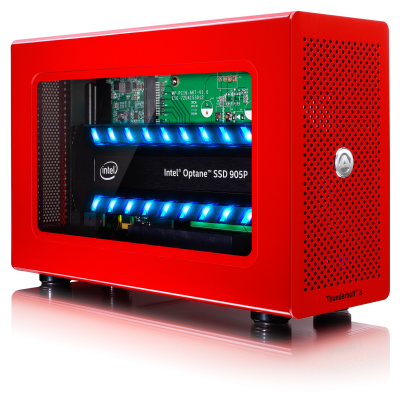
With industry-leading performance and endurance, the Node Lite with Intel® Optane™ SSD delivers incredibly fast transfer rates of up to 2600 MB/s. Connecting to a computer via Thunderbolt™ 3, this external drive is ready to handle even the most demanding storage workloads for both Mac and PC users.
Add a comment- Details
- Flash Memory
 ADATA Technology, a leading manufacturer of high-performance DRAM modules and NAND flash products, today launched the ADATA IUSP33F PCIe ball grid array (BGA) solid state drive (SSD). The SSD sports a form factor that is 80 percent more compact than M.2 2242 SSDs. Combined with a PCIe Gen3x2 interface and 3D Flash memory for excellent performance and durability, the IUSP33F is an ideal solution for slim-form-factor tablets, notebooks, hybrids, mini-PCs, thin clients, and wearables.
ADATA Technology, a leading manufacturer of high-performance DRAM modules and NAND flash products, today launched the ADATA IUSP33F PCIe ball grid array (BGA) solid state drive (SSD). The SSD sports a form factor that is 80 percent more compact than M.2 2242 SSDs. Combined with a PCIe Gen3x2 interface and 3D Flash memory for excellent performance and durability, the IUSP33F is an ideal solution for slim-form-factor tablets, notebooks, hybrids, mini-PCs, thin clients, and wearables.
“We are thrilled to be introducing the new IUSP33F SSD, a compact solution that will enable next-generation tablets, ultrabooks, and other slim devices, but without compromising on performance and reliability,” said Hedi Huang, Sales Director of ADATA. “But the versatility of the IUSP33F goes beyond just these applications, and are also well-suited for new emerging applications in areas such as robotics, augmented and virtual reality, and automotive.
Small Profile for Slim Devices
With the growing prevalence of 3D Flash and advancements in manufacturing, SSDs are becoming ever more lightweight and compact, and the IUSP33F is a result of these developments. Thanks to its compact 11.5mm by 13mm BGA package and NAND Flash, the IUSP33F sports a profile that is comparable to that of eMMC memory. The reduced profile of the IUSP33F makes it suitable for slim devices where space is at a premium.
Add a comment- Details
- Flash Memory
KINGMAX, a world-renowned professional memory manufacturer, has consummated its product line of M.2 2280 PCIe NVMe solid-state drives (SSDs), providing users who want to improve their PC performance with a greater variety of choices. In addition to the ultra-fast M.2 PCIe SSD PX-3480 (Gen3x4) and the PX-3280 (Gen3x2), the affordable/entry-level PJ-3280 (Gen3x2) has also been introduced, allowing users who are considering turning to SSDs to boost their computer performance a higher-speed and more economical option aside from 2.5-inch solid-state drives.
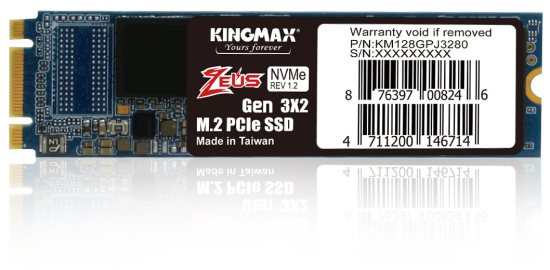
An increasing variety of motherboards or notebooks are currently available on the market, including motherboards equipped with Intel Z270, X99 and the latest 2 Series/3 Series chipsets, all of which are equipped with the M.2 PCIe interface as standard equipment to enable future upgrades. As long as the M.2 slot is the M key version, a solid-state drive that comes with the M.2 PCIe interface can be employed to push the speed and performance of a computer to higher levels. The KINGMAX M.2 2280 NVMe SSD PJ-3280 (Gen3x2) is manufactured using 3D NAND Flash stacking technology, making it highly efficient, stable and durable. Meanwhile, the M.2 2280 is 22x80 mm in size and is available in capacities of 128GB, 256GB or 512GB, suitable for improving the performance of space-challenged notebooks and ultrabooks while expanding capacity.
Add a comment- Details
- Flash Memory
PATRIOT, a global leader in performance memory, SSDs, gaming peripherals, and flash storage solutions today has announced the availability of the EVLVR Thunderbolt 3 external SSD, offering a breakthrough evolution in SSD technology.
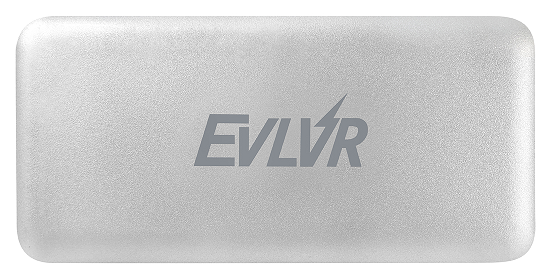
The amount of data that users transfer, and store has been getting larger over the years due to major evolutions in technology and the ability to quickly process large amounts of data. Ideal for HD content, portable boot drives, video game libraries, high capacity jobs and more, Patriot's EVLVR Thunderbolt 3 external SSD brings fast speeds and convenience for consumers everywhere.
Add a comment- Details
- Flash Memory
Crucial, a leading global brand of memory and storage upgrades, announced today the availability of the Crucial BX500 SSD, a next-generation drive designed to provide everyday computing users with a fast and reliable storage upgrade. Available in a 2.5-inch form factor and 120GB, 240GB, and 480GB capacities, the BX500 is the easiest way to get all the speed of a new computer without the price.
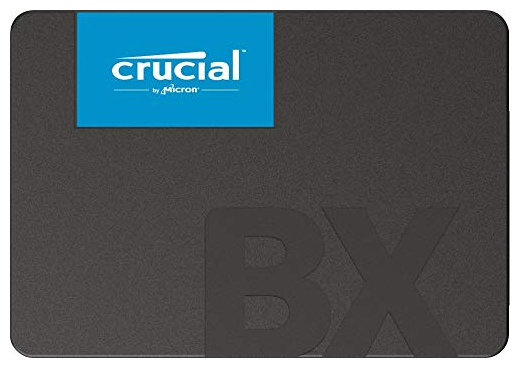
Improve performance.
With sequential read/write speeds up to 540/500 MB/s, the new BX500 enables faster system boot up, faster file loads, and overall improved system responsiveness. The BX500 has no moving parts, making it a cooler, quieter, and more reliable alternative to a hard drive. Furthermore, because it uses less power than a hard drive, laptop battery life is extended.
- Details
- Flash Memory
Samsung Electronics America, Inc. today unveiled the Samsung Data Center solid-state drive (SSD) lineup to address current and future trends in high performance computing storage in the big data era for small and medium businesses (SMBs). Samsung’s new family of Data Center SSD solutions, which consists of the 860 DCT, 883 DCT, 983 DCT and the 983 ZET, are engineered to meet the evolving needs of SMBs, including faster, sustained performance, higher capacities and enterprise-class reliability and security.
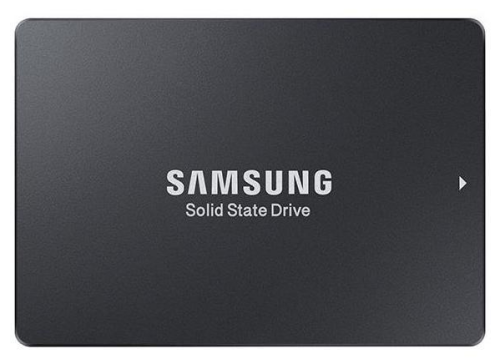
Samsung’s Data Center SSD portfolio will raise the bar for efficiency compared to legacy storage systems, requiring fewer servers and reduced power and cooling for a lower total cost of ownership (TCO). The new lineup delivers better Quality of Service (QoS) for SMBs by reducing latency and lowering data delays. The entire line provides enhanced reliability and endurance for 24/7 operation backed by a 5-year limited warranty and impressive Drive Writes Per Day (DWPD) ratings.
Add a comment- Details
- Flash Memory
Sony today announced a brand new innovation in storage media with the launch of the “SF-G series TOUGH specification” UHS-II SD card. Addressing the needs of photographers who are reliant upon their photographs remaining safe when their SD cards are removed from the camera, the new SF-G series TOUGH specification range combines the world’s fastest read and write speeds with an ultra-rugged design that is bend proof to 180N, and drop proof to 5 metres. For photographers who are fighting against the elements to get the perfect shot, the SF-G series TOUGH specification range of SD cards are also waterproof with an IPX8 rating and dustproof with an IP6X rating.
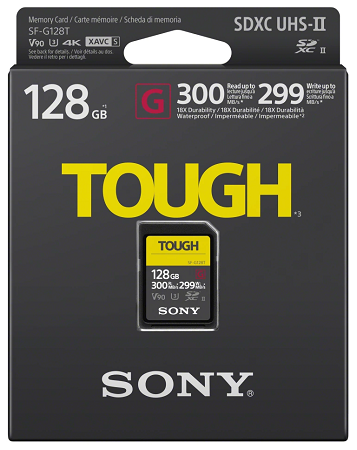
The new SF-G series TOUGH specification range of SD cards are 18 times stronger than the SD standard with world’s first monolithic structure (one-piece molding, no empty space in the card) and materials of high-grade hardness, unlike conventional SD cards with a thin, 3-part ensemble. They areprotected against typical physical damage that can affect conventional SD cards such as a broken plastic casing, broken data protection lock and broken connector ribs. This has been achieved through a new means that it is the world’s first rib-less SD card with no write protection switch. These developments ensure that the SF-G series TOUGH specification is more resistant to bending and easy to break parts are removed entirely and has been engineered by Sony to deliver the best balance of hardness and toughness. Completely sealed with one-piece molding structure, no waterdrop, dust or dirt is not allowed to come into the card, meeting highest grade of waterproof (IPX8) and dustproof (IP6X).
Add a comment
